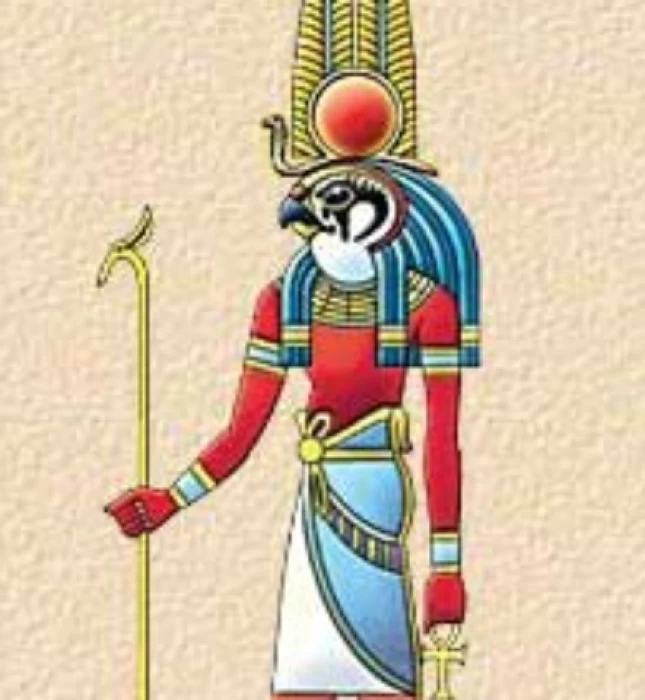
Il dio Montu | Il dio Moutu dell'antico Egitto
Il dio Montu, l'antico dio egizio della guerra, era raffigurato sotto forma di falco e scritto nei geroglifici come Mont o Mentu. Il significato del nome del dio Munto nella lingua egizia antica è che si tratta di un beduino, in quanto è stato interpretato come un vagabondo sul suo volto. un'altra divinità probabilmente originaria dell'Alto Egitto, che in seguito sarebbe stata conosciuta come il "Re degli Dei". È in questo periodo che il ruolo di Montu nella religione egizia assunse le vere caratteristiche di un dio della guerra.
Montu era una delle manifestazioni che venivano influenzate dal sole ardente del dio Ra e sono molto probabilmente indicate con il nome di Montu Ra. Nella XII dinastia, Montu divenne subordinato ad Amon Ra... dopo aver lodato l'eroe della storia per aver sconfitto l'uomo forte. Esisteva una relazione tra Montu e il dio Buchis, dovuta all'esistenza di un legame tra il toro infuriato e la guerra, essendo il toro un simbolo di potere nel passato.
L'arte egizia antica raffigurava Monto sotto forma di uomo, ma con la testa di falco e talvolta a Tiro con la testa di toro. Il dio Munto porta il disco del sole tra due pilastri e si dice che siano due piume, che fanno riferimento al cielo e al toro, che significa forza e guerra.
Facts about the god Montu
Montu was one of the manifestations that were affected by the burning sun of the god Ra and are most likely referred to by the name Montu Ra. If you are interested in discovering mythology about the god Mntu, book our Egypt travel packages to Luxor , by the 12th Dynasty, Montu became subordinated to Amun Ra. after he praised the story hero for defeating the strongman. There was a relationship between Montu and the god Buchis, due to the existence of a link between the raging bull with war, as the bull is a symbol of power in the past. All this historical information will be relevant during your Luxor day tours.
Ancient Egyptian art depicted Monto in the form of a man, but he came with the head of a falcon, and sometimes he came in Tyre with the head of a bull. The god Munto wears the disk of the sun between two pillars, and it is said that they are two feathers, and they are a reference to the sky and the bull, meaning strength and war. If you are an historical person and interested in discovering more and more about Egyptian pharaohs and its mythology, head to Luxor or Aswan day tours.
The god Montu, the ancient Egyptian god of war, was depicted in the form of a falcon and written in hieroglyphs as Mont or Mentu. The god Montu is one of the Egyptian gods that you will find in their history during our Egypt tours. He has a lot of places for worship, one of the most famous places is Tyba, it is included in our Egypt day tours
The meaning of the name of the god Munto in the ancient Egyptian language is that he is a Bedouin as he was interpreted as a wanderer on his face. another deity who probably originated in Upper Egypt, and would later be known as the "King of Gods". It was during this period that Montu's role in Egyptian religion took on the true attributes of a war god. He became a war.
The temple dates back to the reign of King Thutmose III (1481-1425 BC), one of the kings of the Eighteenth Dynasty. He constructed parts of the temple on the ruins of an older temple, according to the most reliable accounts. It was renovated by King Amenhotep III (1393-1353 BC), during the middle of the same dynasty...According to him, the temple included a huge gate that was refurbished during the Ptolemaic period, as well as an avenue of rams, which was common at the time for ancient Egyptian temple entrances. He then led to the inside of the temple, which included a hall, a courtyard, and a sanctuary on the south side. Around the temple were a number of storage and daily service chambers.
He indicated that the temple had some annexes, including a wall surrounding all parts of the temple, a sacred lake, and a well. Another entrance connected the temple to the Karnak temple complex via a massive stone gate located in the mudbrick wall constructed by King Nectanebo I of the Thirtieth Dynasty.














